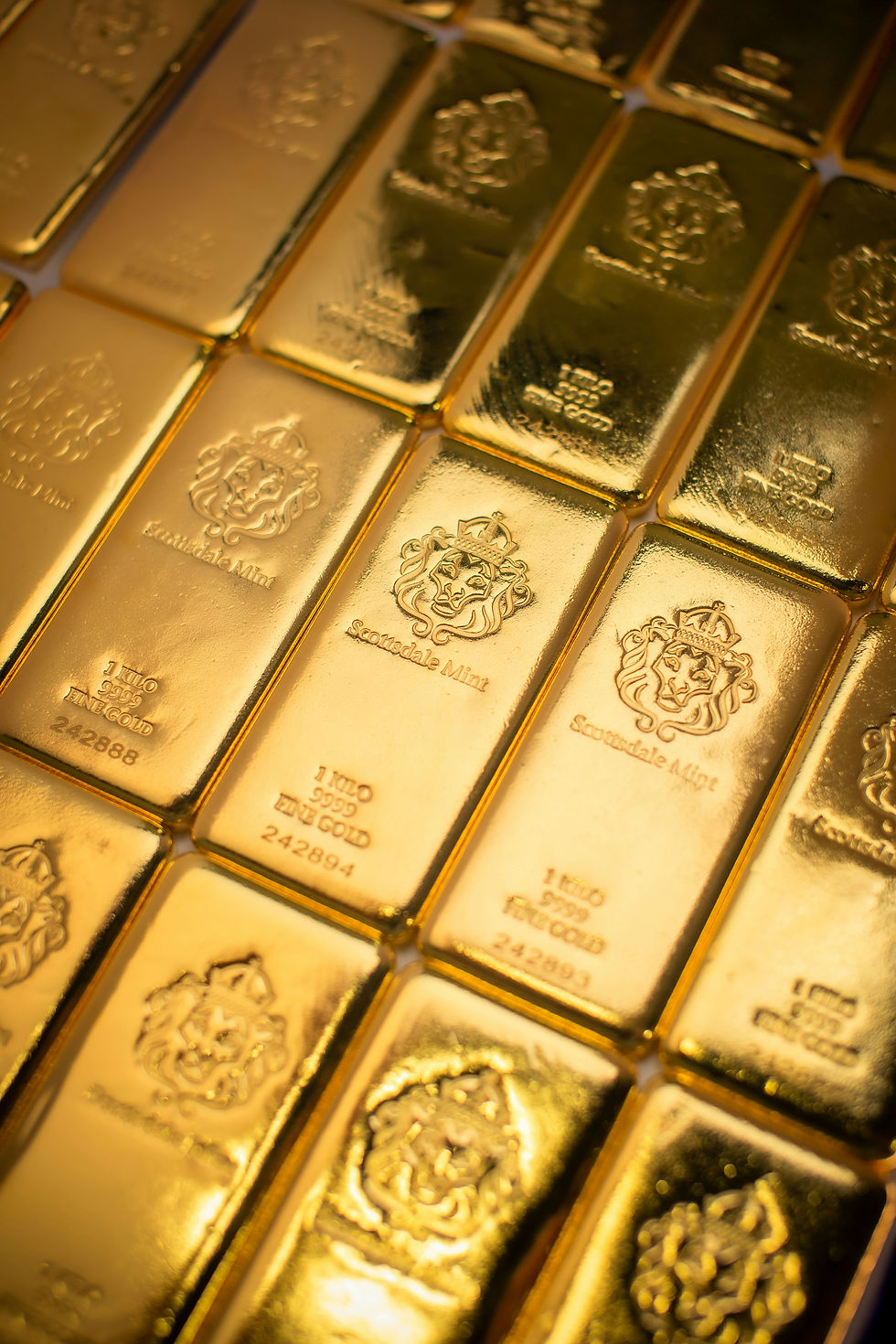The Influence of Precious Metals on Economic Markets
- ludgerborger
- Jun 28, 2023
- 3 min read

When it comes to economic markets, precious metals have long been regarded as key indicators of economic health and stability. Among these valuable resources, gold, silver, and platinum have historically played significant roles in shaping financial landscapes. In this blog post, we will explore the profound influence of these precious metals on economic markets, analyzing their impact, factors affecting their prices, and the insights they provide for investors and economists.
Gold: The Safe Haven Asset
Gold has always held a special place in the world of finance. As a safe haven asset, it acts as a hedge against economic uncertainty and inflation. During times of market turmoil or geopolitical tensions, investors flock to gold, seeking stability and wealth preservation. The price of gold often moves inversely to the stock market, making it an essential barometer for market sentiment and economic health.
Silver: The Economic Barometer
Silver, with its extensive industrial applications and historical monetary role, serves as an economic barometer. As the demand for silver increases, it reflects economic growth and industrial activity. This precious metal's price movements provide insights into manufacturing, electronics, and renewable energy sectors. Silver's volatility makes it a favorite among traders, responding quickly to market shifts and sentiment changes.
Platinum: The Precious Metal of Industry
Platinum's influence extends beyond being a precious metal; it plays a crucial role in industrial applications. Its strong resistance to corrosion and high melting point make it indispensable in automotive catalytic converters, electrical components, and chemical processes. Consequently, platinum prices are influenced by factors like global manufacturing, auto industry trends, and technological advancements, making it a significant economic indicator.
Factors Affecting Precious Metal Prices
Several factors contribute to the price fluctuations of gold, silver, and platinum:
A. Economic Indicators: Precious metal prices respond to macroeconomic data such as GDP growth, interest rates, inflation, and employment figures. Positive economic indicators may drive down demand for safe-haven assets like gold.
B. Currency Movements: Precious metal prices are closely tied to currency movements, especially the U.S. dollar. As the dollar weakens, precious metals become relatively cheaper and more attractive to global investors.
C. Geopolitical and Market Uncertainty: Political tensions, trade disputes, and market volatility can drive investors towards safe-haven assets, boosting demand and driving up prices.
D. Supply and Demand Dynamics: Limited supply and increasing demand for industrial applications or investment purposes can significantly impact the prices of precious metals.
Insights for Investors and Economists
The price movements of gold, silver, and platinum offer valuable insights:
A. Risk Perception: Fluctuations in precious metal prices indicate investors' risk perception and serve as a gauge for market sentiment.
B. Inflation Expectations: Rising gold prices often signal concerns about inflation, as investors seek a store of value to preserve their wealth.
C. Currency Strength: Precious metal prices can reflect the strength or weakness of currencies, particularly the U.S. dollar, offering insights into global exchange rates.
D. Industrial Demand and Economic Growth: Silver and platinum prices provide information about industrial demand, manufacturing activity, and economic growth prospects.
Conclusion
Gold, silver, and platinum hold substantial influence over economic markets. As safe-haven assets, they offer stability during uncertain times, while their price movements reflect market sentiment and economic indicators. Understanding the factors that affect their prices and the insights they provide can empower investors and economists in making informed decisions. Whether as a hedge against inflation, an indicator of economic health, or a measure of industrial demand, these precious metals continue to shape and inform the ever-evolving world of finance and economics.




Comments